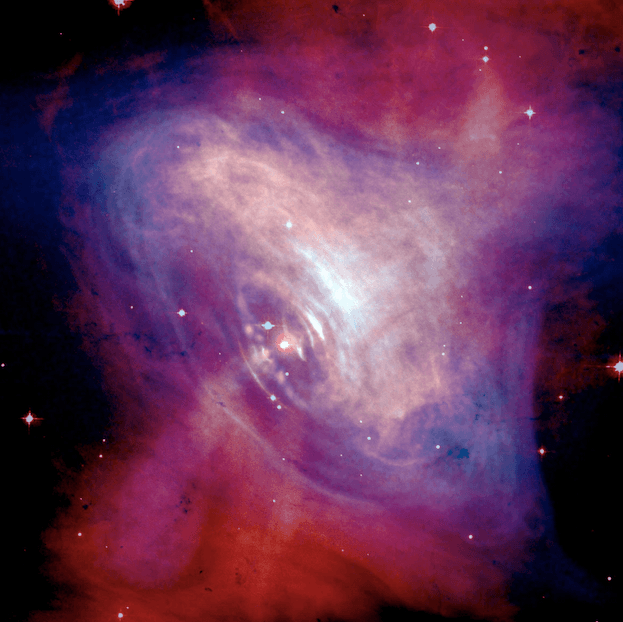A pulsar is a highly magnetised fastly rotating neutron star which formed during a supernova explosion. The name pulsar is a portmanteau for pulsating star, because it emits a beam of electromagnetic radiation usually in radio, x-ray or gamma-ray light.
They were first discovered by Jocelyn Bell Burnell and Antony Hewish in 1967, when they saw an object pulsating every 1.33 seconds. This phenomenon was so unexpected that they had to consider the possibility that the signal wasn’t of natural origin, and they jokingly nicknamed the first pulsar “Little Green Man”.
Pulsars are incredibly precise clocks. On the same level as, if not better than, atomic clocks. Moreover if we had to describe our place in the galaxy the distance and the rotational period of the pulsars around the solar system would be the ideal instrument to create a galactic positioning system.
In the case considered in this paper, the once regular pulsation of PSR J0738-4042 changed in a very peculiar manner. This has led the astronomers of Australia’s Commonwealth Scientific and Industrial Research Organisation to think that something catastrophic has happened. The group has previously theorised that repeated asteroid hits could alter the pulsar’s timing and its characteristic pulse (Cordes & Shannon, 2008).
PSR J0738-4042 seems to corroborate the 2008 hypothesis. The time of the pulse has lengthened and the radio signal received by the CSIRO team has changed. When the asteroids are close enough to the star, they are vaporised by the high energy pulsing beam. The plasma that is then created, being composed by electrically charged particles, interacts with the strong magnetic field of the pulsar sapping the angular momentum, and brings the observed change in the pulsation. The amplitude of the change suggests that one of the objects had a mass of a billion tons.
References
Evidence of an Asteroid encountering a Pulsar P. R. Brook et al. 2014 ApJ
Rocking the Lighthouse: Circumpulsar Asteroids and Radio Intermittency. J. M. Cordes & R. M. Shannon. 2008. Ap.J. 682. 1152. astro-ph/0605145.

